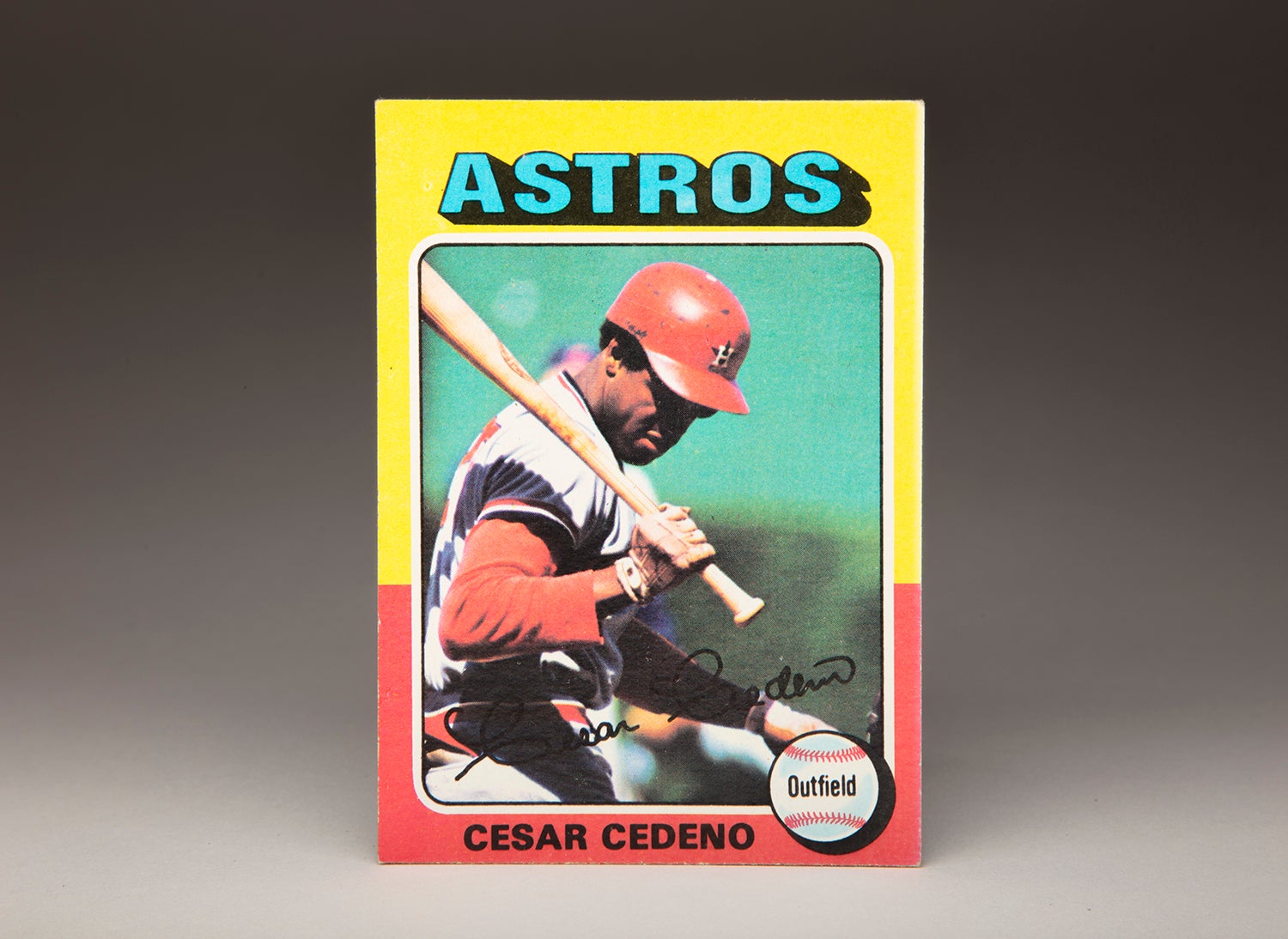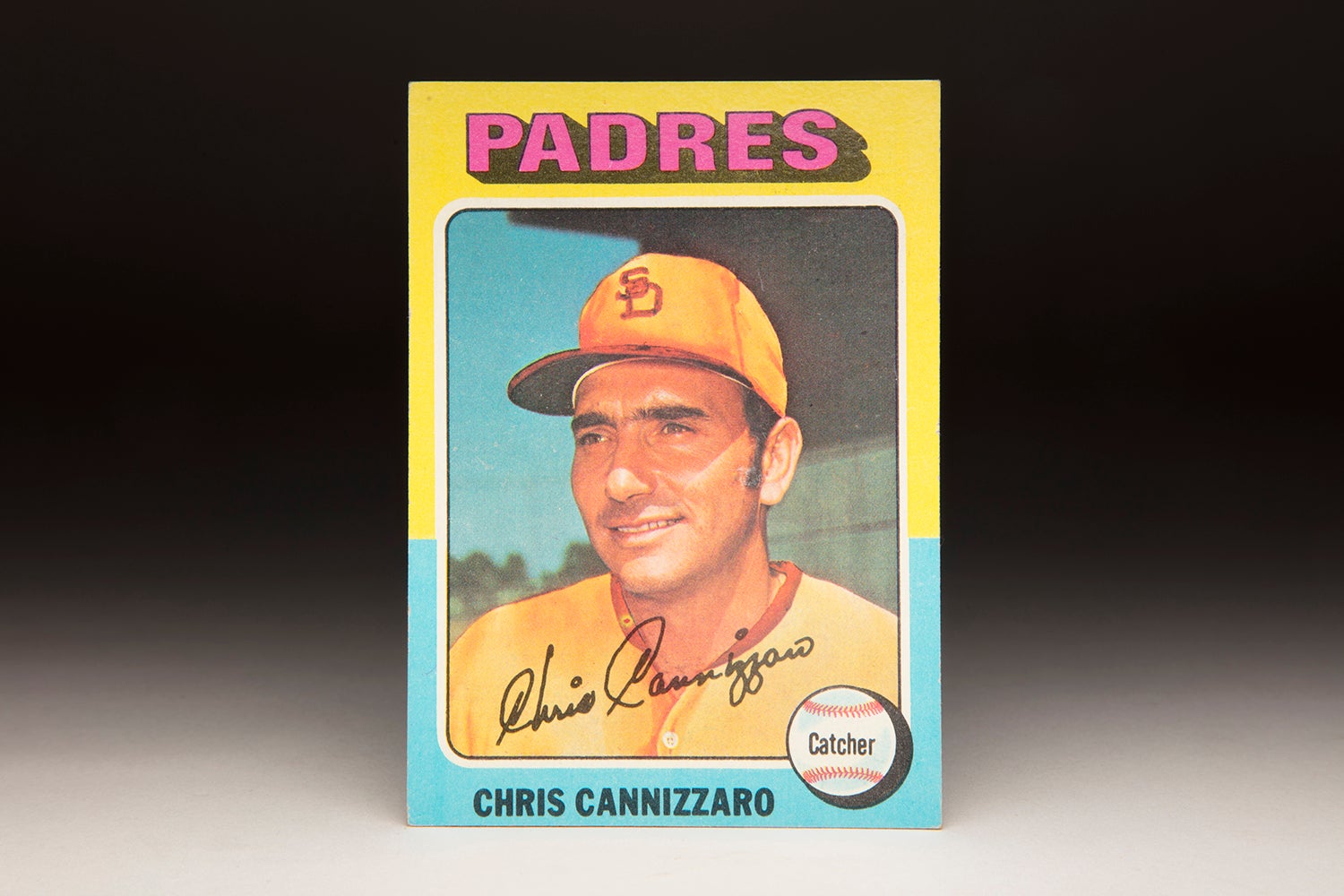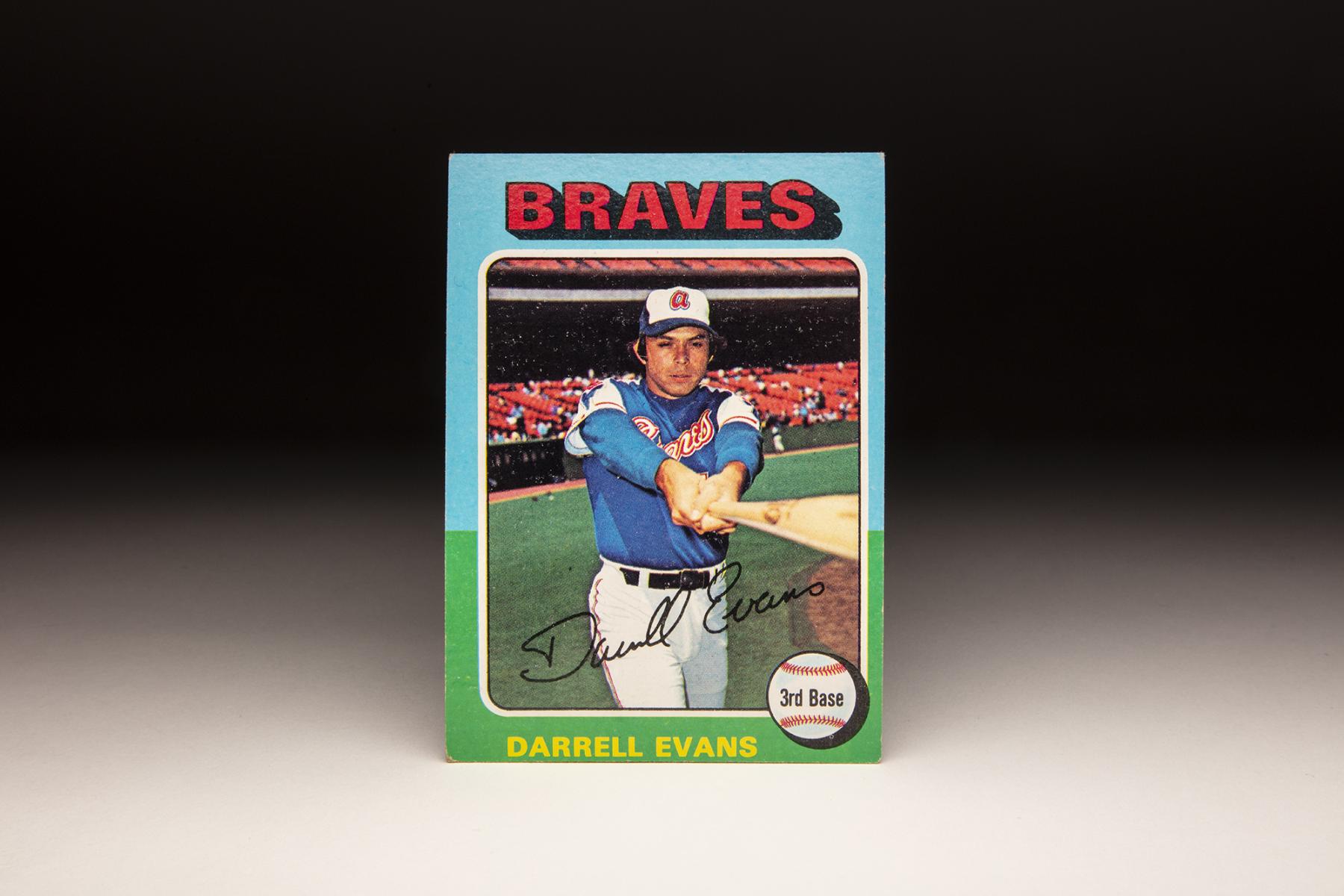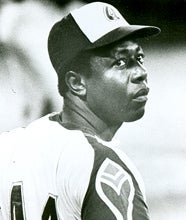- Home
- Our Stories
- #CardCorner: 1975 Topps Darrell Evans
#CardCorner: 1975 Topps Darrell Evans
Timing never seemed to be Darrell Evans’ friend.
His breakout season of 1973? It came for the same Atlanta team that featured two other 40-home run hitters, including Hank Aaron – who finished one homer short of tying Babe Ruth’s all-time record.
His play with the 1984 World Champion Tigers? It came between two spectacular seasons and was his most challenging campaign of a 10-year stretch.
His MLB career from 1969-89? It covered an era that did not, thanks to a lack of advanced metrics, appreciate his power and plate discipline.
Official Hall of Fame Apparel
Proceeds from online store purchases help support our mission to preserve baseball history. Thank you!
This is one case where the stats on the back of baseball cards – where so many of us learned the game – did a disservice to a player who was better than the simple arithmetic.
Evans was born on May 26, 1947, and grew up in Southern California. He was selected five different times in the MLB Draft: Once from high school and four times while he was at Pasadena City College.
After signing with the Kansas City Athletics when they took him in the seventh round of the June 1967 MLB Draft, Evans suffered a shoulder injury that cost him much of the 1968 season and left his future in doubt. The A’s did not protect him for the Rule 5 Draft in December of 1968, and the Braves took a flyer on the lefty swinging third baseman.
Finally healthy, Evans hit .321 across three minor league levels in 1969, earning a late-season call-up with the Braves. He played another handful of games with Atlanta in 1970, then took over as the Braves’ starting third baseman midway through the 1971 season.
Evans tallied a respectable 19 home runs and 71 RBI in his first full season as a regular in 1972 – also drawing 90 walks in only 125 games. The next season, Evans earned his first All-Star Game berth with a season for the ages, hitting .281 with 41 home runs, 114 runs scored, 104 RBI and an MLB-best 124 walks. He also turned in Gold Glove-caliber defense at third base (though he did not win the award), resulting in a WAR of 9.0 for the season.
In the game’s history, 10 third basemen have compiled a season worth 9.0 WAR or better. Only Alex Rodriguez (twice) has done it more than once.
Evans experienced some regression in 1974, but still hit 25 home runs, scored 99 runs and recorded 79 RBI while again leading the majors with 126 walks. However, his .240 batting average – in an era where that statistic was king – fooled many into thinking Evans was not a good hitter.
Evans’ WAR in 1974? A healthy 7.2, fifth in the National League.
This batting average problem seemed particularly noticeable to me as I thumbed through Evans’ baseball cards throughout the years. Of course, it did not help that Topps failed to list either walks or on-base percentage.
The 1975 season looked a lot like 1974 for Evans, but in 1976 the Braves moved Evans to first base to clear room for prospect Jerry Royster. But with Evans hitting .173 on June 13, the Braves traded him to the Giants along with Marty Perez in exchange for four players – most prominently Willie Montañez.
The Braves appeared to get the best of the trade, as Montanez finished that season with 206 hits and a .317 batting average.
Evans, meanwhile, never found his groove and finished with a .205 batting average, 11 homers and 46 RBI in 136 games.
Montañez, however, spent only one more season in Atlanta before being traded. Evans, meanwhile, found a home in San Francisco and settled into a regular pattern of hitting about 20 homers, driving in about 70 runs and drawing around 80 walks.
In 1982, the 36-year-old Evans had his best season with the Giants, hitting 30 home runs to go with a .277 batting average, 82 RBI and 84 walks. By this point, Evans had moved to first base – and following the season he signed a three-year deal with the Tigers worth about $2.3 million.
Detroit gave Evans the chance to play in the Postseason for the first time in his career, and though Evans struggled in 1984, the Tigers did not. Detroit jumped out to a 35-5 record and was never seriously challenged, winning the World Series title in a five-game victory over the Padres.
Evans hit just .232 with 16 homers and 63 RBI, but did draw 77 walks en route to a .353 on-base percentage. And those who thought Evans was finished were surprised the next season when he hit an MLB-best 40 home runs.
Evans hit a combined 63 home runs in 1983 and 1987, helping Detroit win the AL East title in the latter year. Age began to catch up to him in 1988, however, and the Tigers released him following the season. He spent the 1989 season as a bench player with the Braves before calling it a career.
In 21 seasons, Evans hit .248 – an average that, to the untrained eye, seemed pedestrian at best. But his .361 on-base percentage, 414 home runs and 1,605 walks told the story of a player who was much more than a mere batting average.
The 414 home runs ranked 21st all-time when he retired, and the 1,605 walks ranked eighth. When Evans retired, only Babe Ruth, Mickey Mantle, Ted Williams, Mel Ott and Carl Yastrzemski had at least 400 home runs and 1,600 walks.
Evaluating Darrell Evans through the lens of those names presents a whole different picture than was available on the back of baseball cards.
Craig Muder is the director of communications for the National Baseball Hall of Fame and Museum
Related Stories

#CardCorner: 1975 Topps Herb Washington

#CardCorner: 1975 Topps César Cedeño
#CardCorner: 1975 Topps Larry Biittner

#CardCorner: 1975 Topps Chris Cannizzaro

#CardCorner: 1975 Topps Herb Washington

#CardCorner: 1975 Topps César Cedeño
#CardCorner: 1975 Topps Larry Biittner






